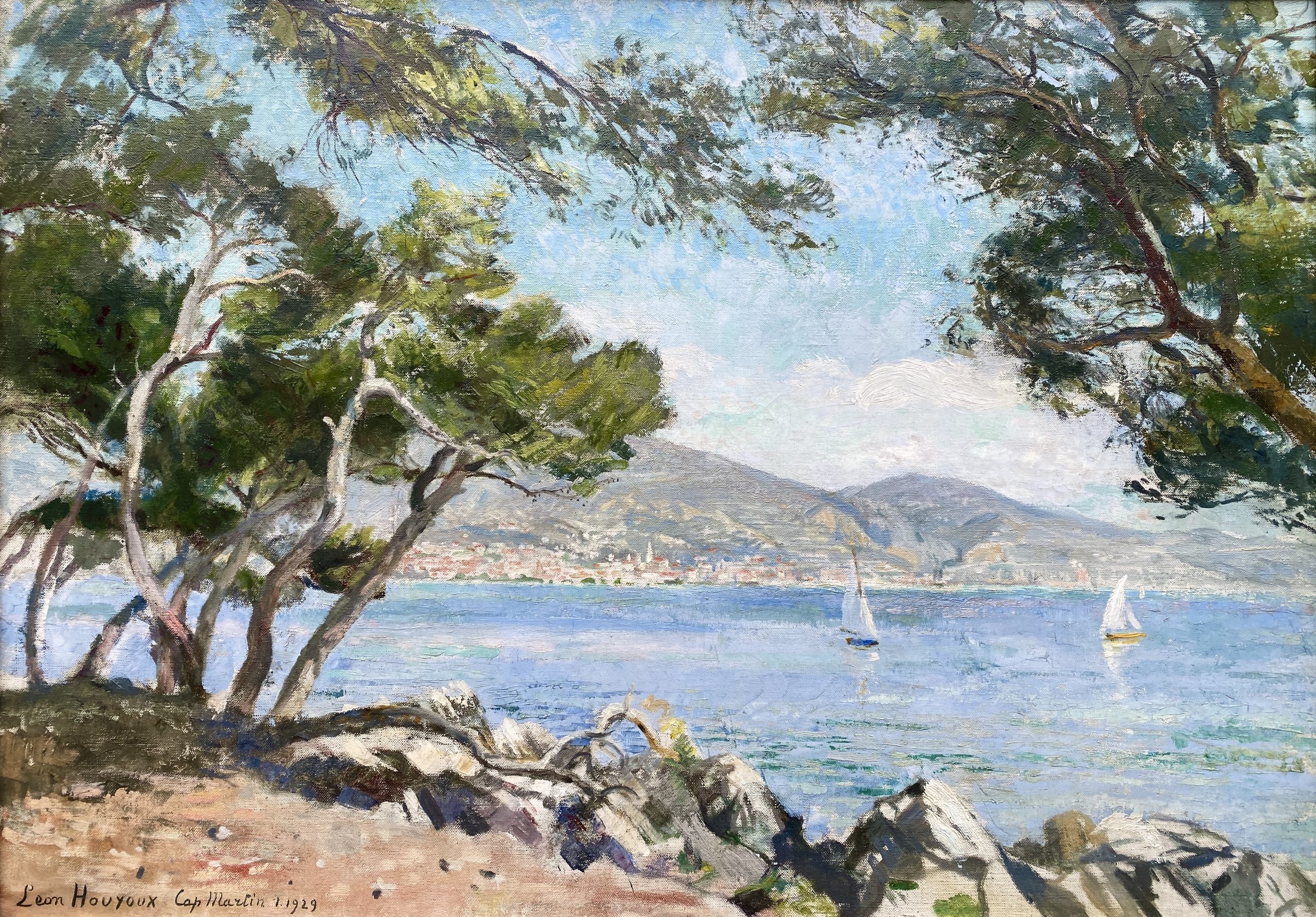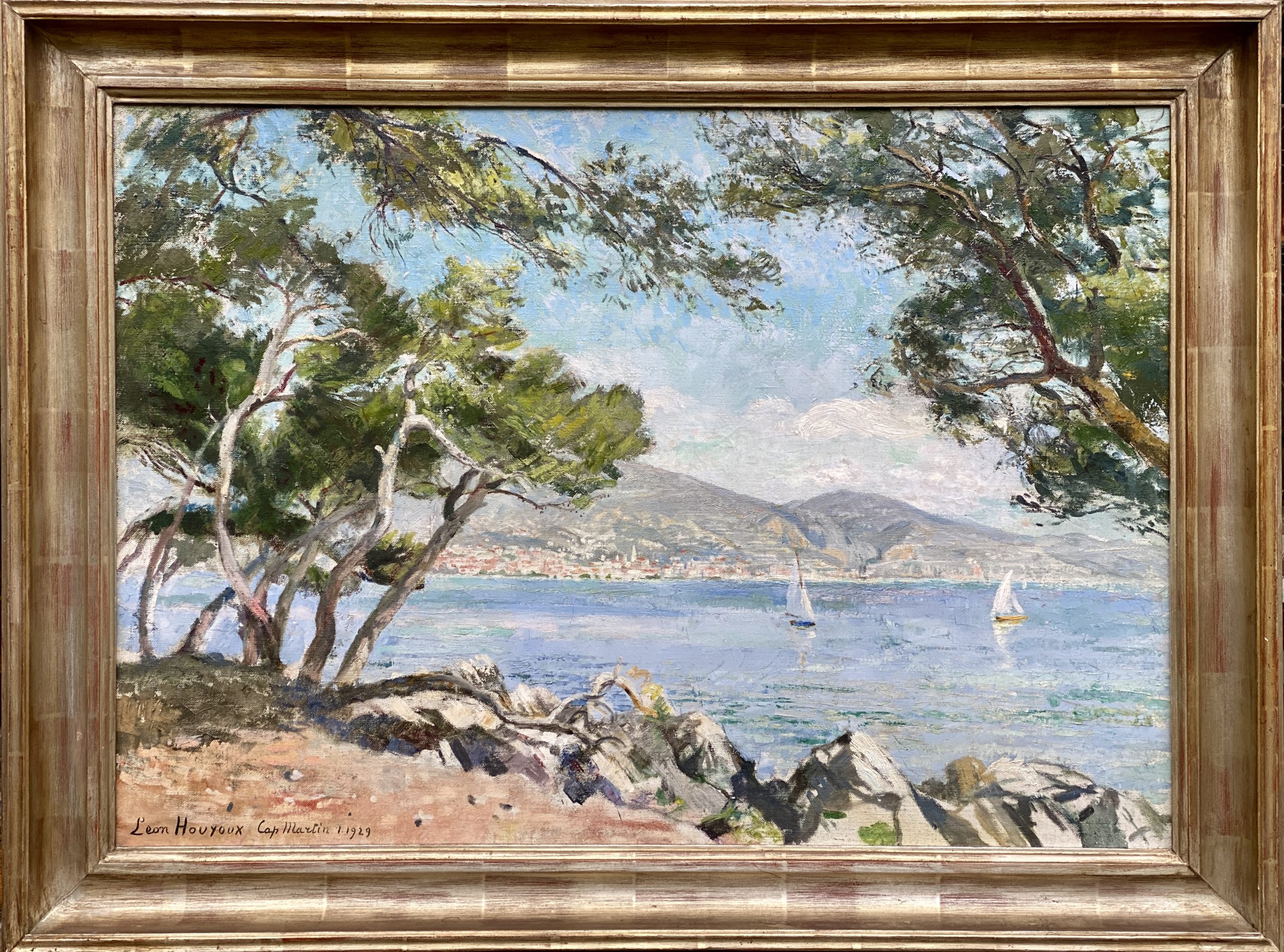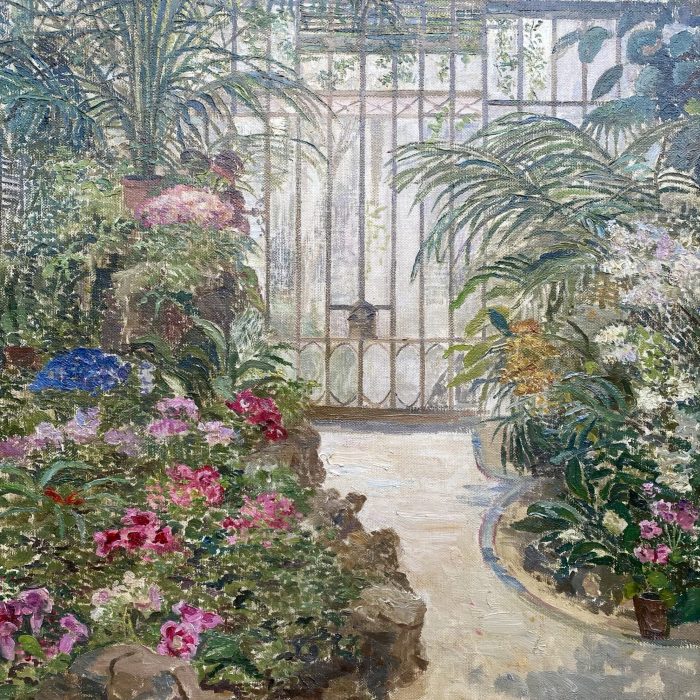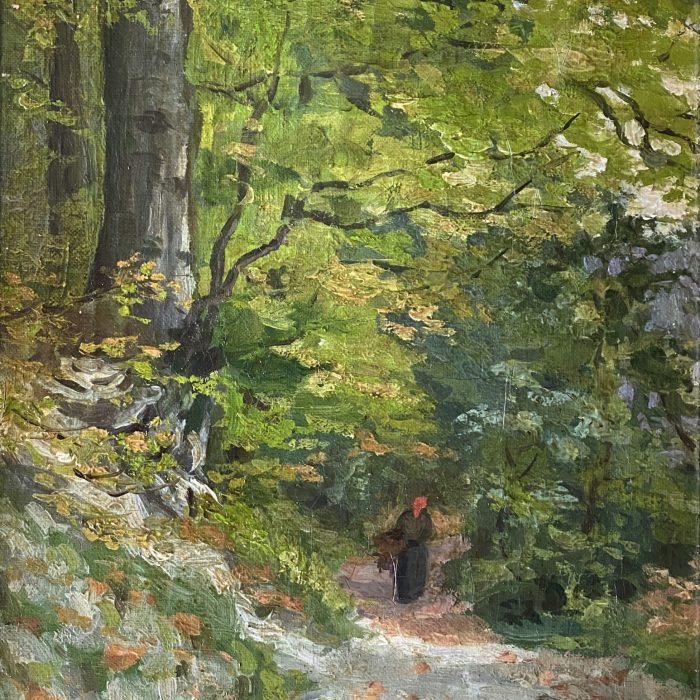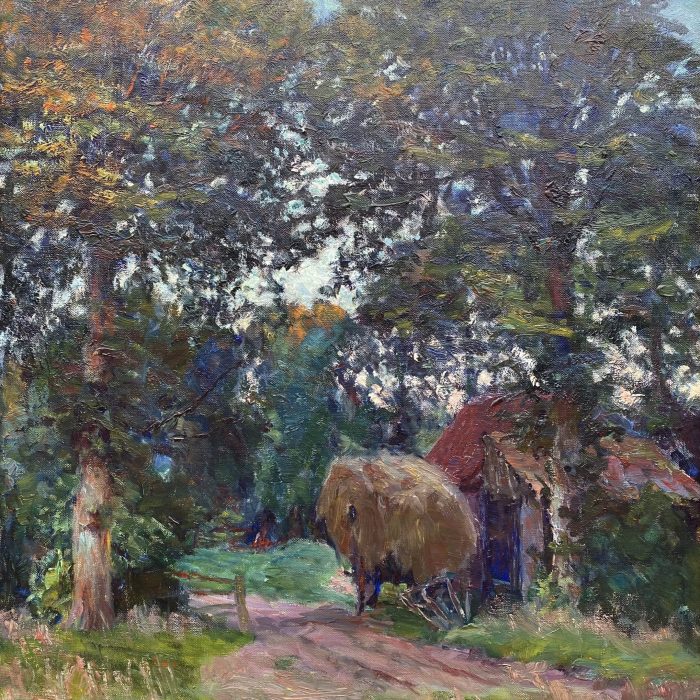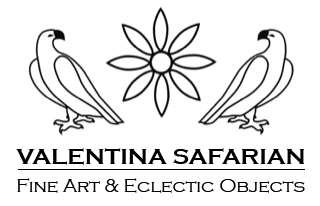Brussels 1856 – 1940 Oudergem
Belgian Painter
View of Cap Martin, Côte d’Azur
Léon Jean Jacques Houyoux, born on November 24, 1856, in Brussels, was a distinguished Belgian painter renowned for his landscapes, nudes, and genre scenes. He passed away on October 10, 1940, in Auderghem. Houyoux, who was the uncle of architect Maurice Houyoux and publisher George Houyoux, had a rich and influential career in the art world.
From an early age, Léon was deeply inspired by nature. Although he did not begin formal art studies until the age of 19, he quickly immersed himself in the artistic community. Houyoux attended evening painting classes at the Brussels Academy of Painting before studying under the guidance of Jean François Portaels at the Royal Academy of Fine Arts in Brussels from 1877 to 1879. His classmates included notable artists such as Fernand Khnopff, James Ensor, and François Halkett. In the 1878-1879 academic year, Houyoux achieved first place in painting, surpassing Khnopff and Ensor.
Following his academic training, Houyoux traveled extensively across Europe, where he encountered and embraced Impressionism, which profoundly influenced his work. His journeys took him to Munich, Paris, the Netherlands, London, Scotland, Dresden, and Berlin. By 1885, he settled in Brussels, where he established his studio and began making a name for himself.
In 1881, Houyoux debuted at the Salon Triennal de Bruxelles and joined the artistic circle “L’Essor.” He exhibited his work at various prestigious venues, including the Cercle Artistique et Littéraire de Bruxelles and in London. His association with Fernand Khnopff was notable, with Khnopff creating a significant piece for Houyoux’s home in 1880.
A significant milestone in Houyoux’s career came in 1896 when he became a member of the Société Nationale des Beaux-Arts in Paris and won a gold medal for his painting “Sous la Feuillée.” This accolade established his reputation in the art world.
Throughout his career, Houyoux maintained an active presence in artistic circles. He co-signed a declaration in support of Émile Zola during the Dreyfus Affair in 1898 and exhibited at the 1904 World’s Fair in St. Louis, Louisiana. His works were also showcased at the International Fine Arts Exhibition in Bruges in 1908.
In 1908, Houyoux moved to Auderghem, specifically the Rouge-Cloître area, where he spent over twenty years painting the surrounding landscapes, particularly the Soignes Forest. His technique, characterized by vaporous and luministic brushstrokes, captured the essence of nature with remarkable sensitivity. The small red-roofed house he occupied became a notable landmark, often referred to as his studio.
Houyoux’s contributions to art extended beyond painting; he also played a role in Belgian philately. In 1922, the Belgian postal service issued a series of stamps featuring his design of King Albert I, which continued until 1930. The “Houyoux” series is remembered as an important part of Belgian postal history.
During World War I, Houyoux painted “Secours d’hiver,” depicting a winter relief scene by the American Commission for Relief in Belgium. Due to a shortage of canvases, he even painted on flour sacks, with some of these works preserved at St. Edward’s University in Austin, Texas.
Léon Houyoux’s legacy as a painter is marked by his dedication to capturing the beauty of nature and his influence on the Belgian art scene. He was buried in Auderghem Cemetery following his death in 1940. His works continue to be cherished in private and public collections, including the Berlin Museum and the Bremen Museum.

